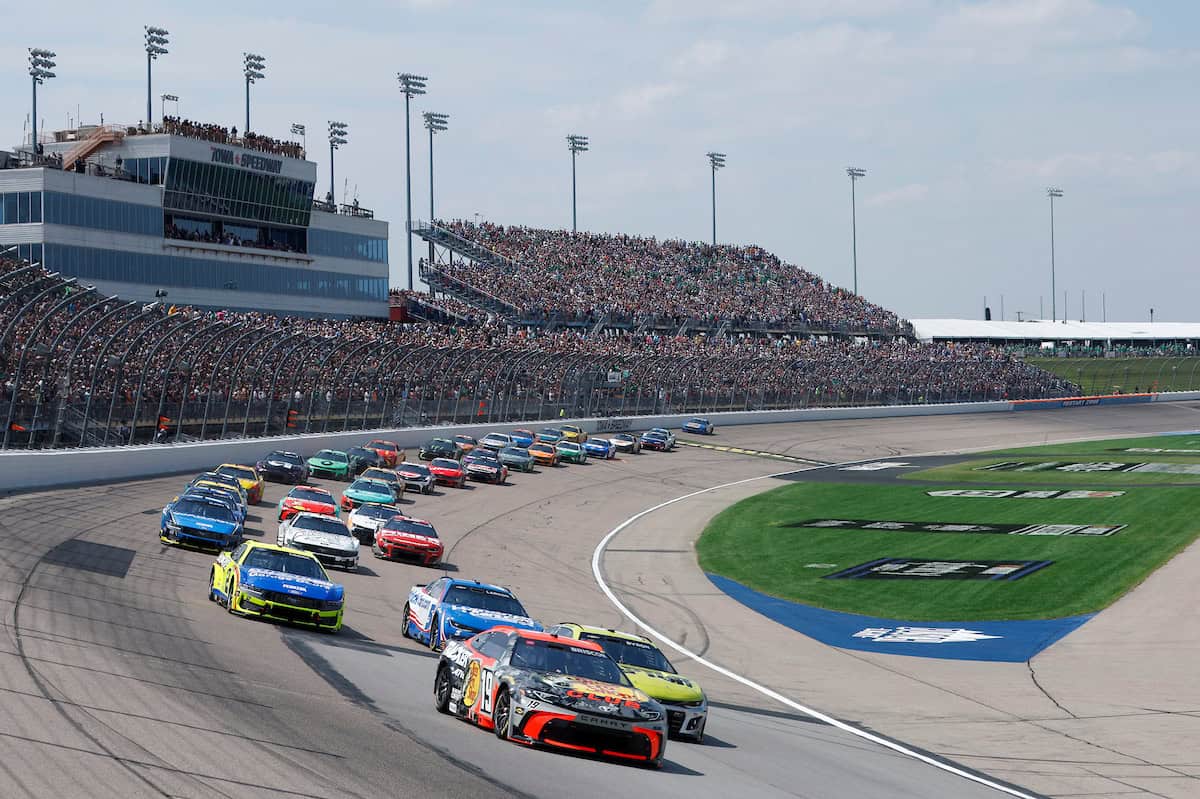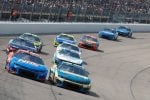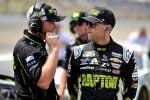When the NASCAR Cup Series first visited Iowa Speedway in 2024, it was a long time coming for many fans. After hosting the NASCAR Xfinity Series and NASCAR Craftsman Truck Series from 2009-2019, the track fell off the landscape in 2020. It returned last year with the Xfinity and Cup Series.
Fans had clamored for a Cup race for years. Iowa, a 0.875-mile D-shaped oval, is not quite a short track and not quite an intermediate. It doesn’t quite race like a bigger Richmond Raceway, but it doesn’t race like any of the one-mile tracks or the true short tracks, either. It was popular enough to host a pair of races for several years, and the NXS cars and the Trucks put on good shows. Naturally, fans wanted more.
So, the Cup Series cars came, and it was…just OK.
Neither Iowa race has been terrible. The inaugural event was better by some measures: fewer cautions, more lead changes among more drivers, a slightly closer margin of victory, and of course, the newness. Cup winners Ryan Blaney and William Byron have a cool footnote as both have won at Iowa in all three national series.
Both last year’s event and Sunday’s had the best racing in the opening stage, with good battles last year between Blaney and Kyle Larson and this year between Byron and Brad Keselowski. In both races though, the eventual winner took the lead with just under 100 laps to go.
This year’s race featured twice as many caution flags as last year, and, while the calls were a bit inconsistent (a whole other story, but a couple were questionable in their necessity), the reality is they made the race look better than it probably was because the racing on restarts was the most compelling action, and even then, it was better in the pack than at the front.
The second Iowa race, without that first-time excitement, was…well, just OK.
The elephant in the room was, as it is too often these days, clean air. While the battle in the opening stage between Byron and Keselowski was hard-fought, it was simply too hard for the faster trailing car to be able to make a pass. Keselowski finally had to move Byron up the track a little to get by, despite having the best car at that point.
And in the final stage? It almost came down to fuel mileage, and that should have made it close: Byron had to back down to half-throttle on the straightaways, and that should have allowed runner-up Chase Briscoe, Blaney and Keselowski, who could run full song with more fuel, to close the gap, especially with slightly newer tires.
But they couldn’t.
Even navigating lapped traffic, Byron could back it down and the gap barely narrowed.
And there are different kinds of battles for the lead. There are door-to-door, knock-down, drag-out fights because the cars are both equal, and it comes down to who wants it enough to squeeze out another ounce of speed somewhere.
Byron vs. Keselowski was not that. A good battle that goes on for lap after lap is exciting and, at the end of the day, the racing everyone wants to see. But this one went on lap after lap because the faster car just couldn’t clear the slower one because it was too aero tight to complete the pass.
A good, hard, clean pass should last a couple of corners, maybe a couple of laps if the drivers fight for it hard enough. It shouldn’t take multiple laps where the second-place driver has to fall in line and try again…and again…and again before being able to take enough air off the leader to finally get by and then immediately take off because he had a faster car and now it’s in clean air.
One is great racing and one is the illusion of it.
Iowa announced that it will be on the 2026 schedule, but should it after a thoroughly average race?
Yes, it should. Like most of the tracks of a mile or less in the Cup Series, it’s proven itself with some really good racing. It’s just that, like most of them, those races are either in another series or fading into the past. But there’s a reason that they were once the hardest tickets to get.
The tracks aren’t the problem. The racecars are the problem.
It’s not just the Next Gen, because while it’s been especially lackluster at the shorter and flatter tracks, the cars have struggled with aero push at one style of track or another for the last 25 or so years. But the Next Gen falls flat at the tracks where fans expect the most action. The car has made racing on the bigger intermediates somewhat better, but at the expense of the tracks fans hold most dear.
That’s a trend that can’t continue.
Whether it’s more horsepower, a drastically different short-track car, or something else—we’re all guilty of suddenly becoming mechanics when the racecar is the subject—NASCAR has to acknowledge that there’s a real problem that needs to be fixed. Not with the small tweaks it’s tried so far, but with meaningful changes, including R&D, testing and more R&D.
We know the racing can be good because we’ve seen it be good. NASCAR may not want to live in the past, but to move forward, good racing, real on-track battles and passing cannot become a thing of the past.
What to Know About the Iowa Race
The race circuit is located in Newton, Iowa. It’s D-shaped and 0.875-mile long. Rusty Wallace designed the race circuit, and it’s somewhere between the grassroots oval racing and the national series action.
The circuit was opened in 2006, and it hosted low-tier NASCAR races until it landed the NASCAR Cup race in 2024. The best crypto sports betting sites offer odds for this race, where players can wager on the outcome and other measurable outcomes, such as over/under wagers on lap time. These betting sites allow players to make wagers using crypto and to quickly and safely transfer funds without providing personal data.
Amy is an 20-year veteran NASCAR writer and a six-time National Motorsports Press Association (NMPA) writing award winner, including first place awards for both columns and race coverage. As well as serving as Photo Editor, Amy writes The Big 6 (Mondays) after every NASCAR Cup Series race. She can also be found working on her bi-weekly columns Holding A Pretty Wheel (Tuesdays) and Only Yesterday (Wednesdays). A New Hampshire native whose heart is in North Carolina, Amy’s work credits have extended everywhere from driver Kenny Wallace’s website to Athlon Sports. She can also be heard weekly as a panelist on the Hard Left Turn podcast that can be found on AccessWDUN.com's Around the Track page.





